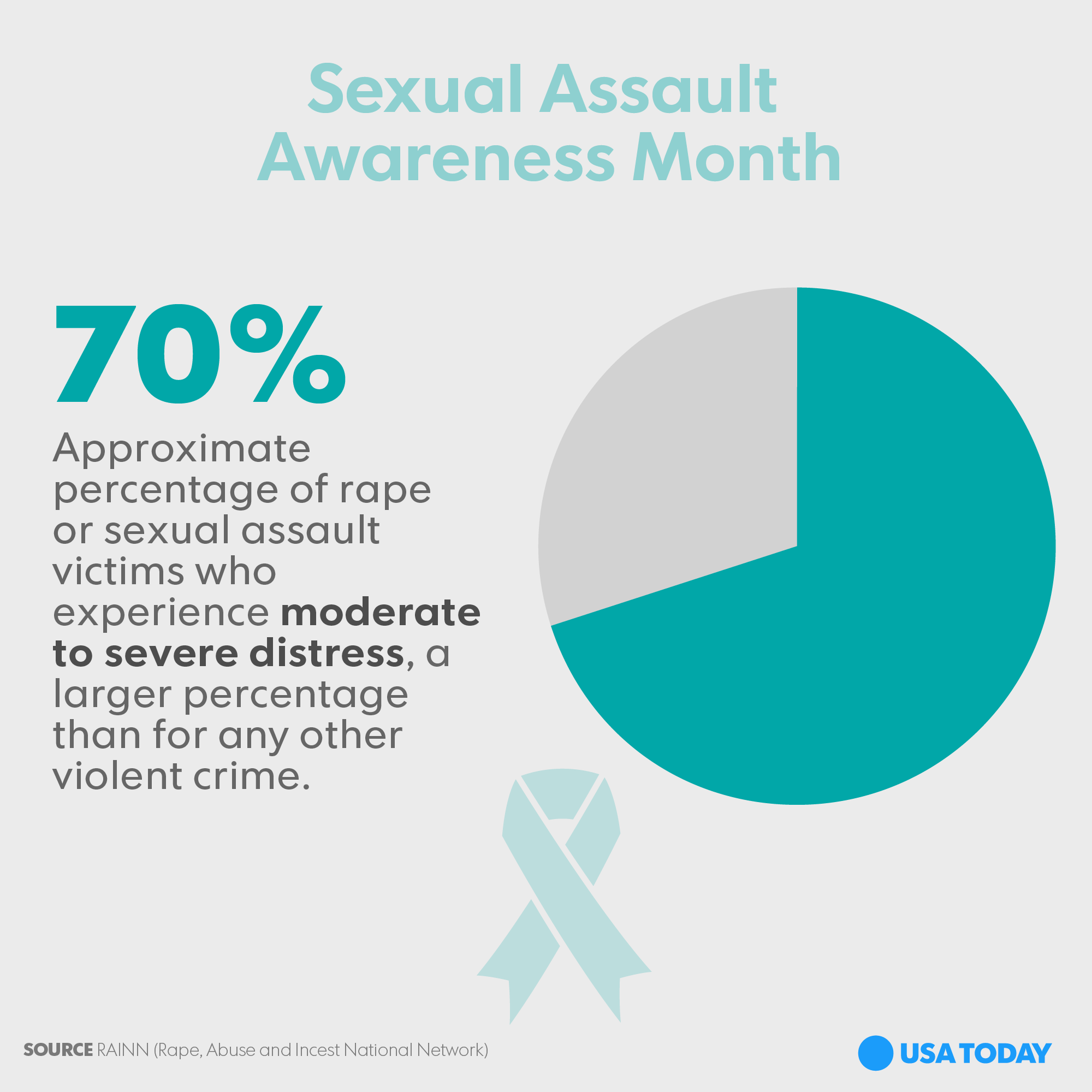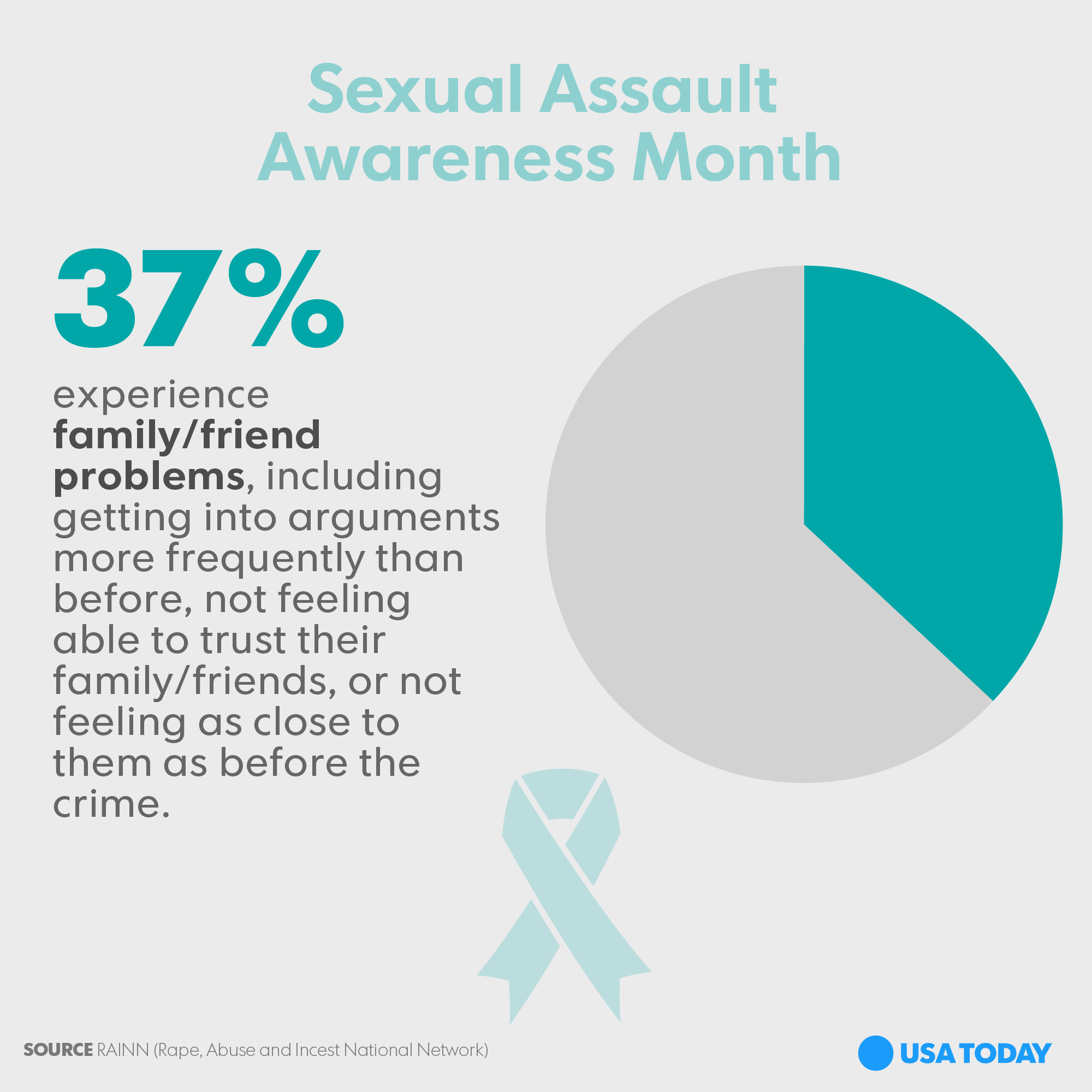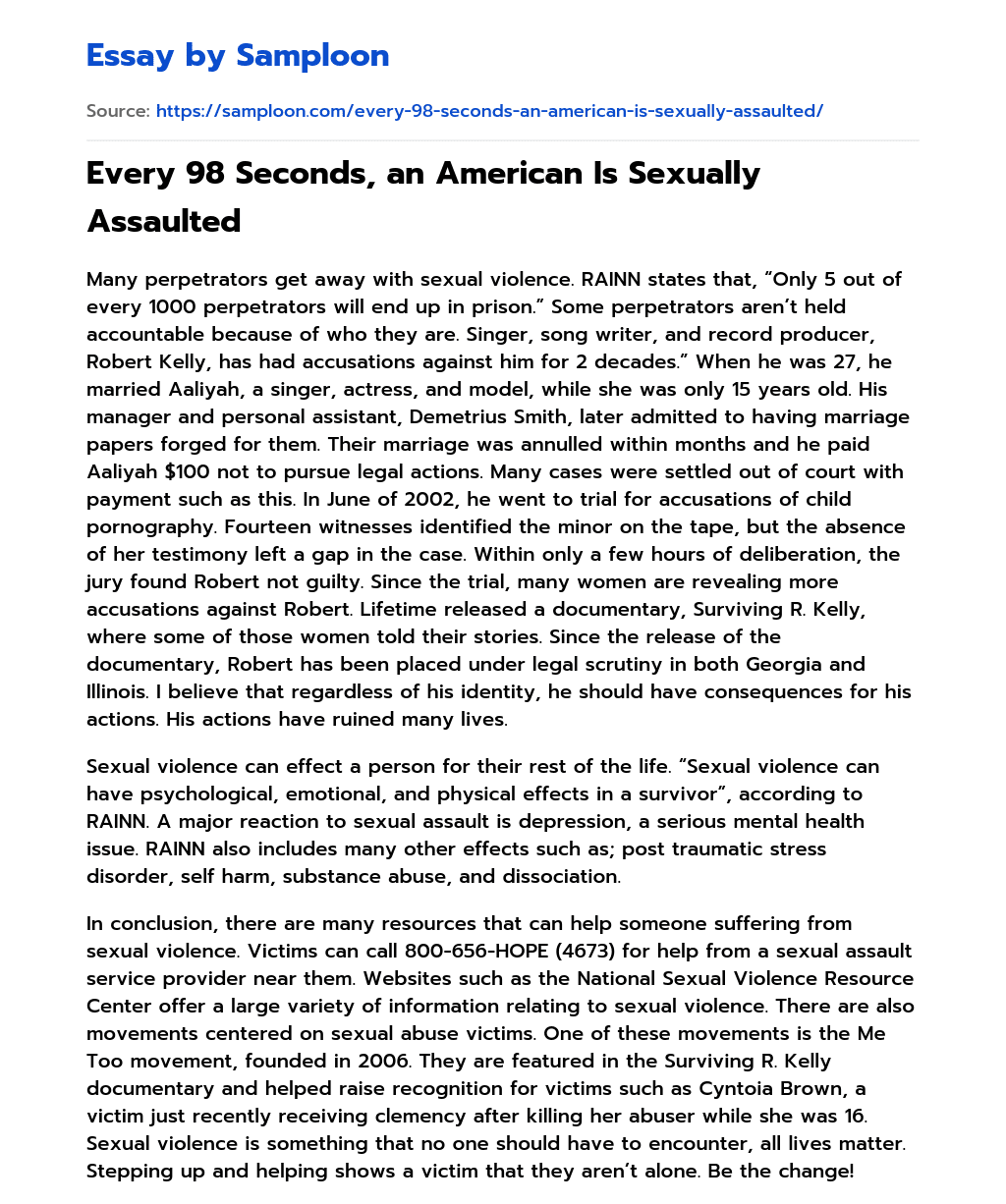It’s a truly unsettling thought, but every 68 seconds an American is sexually assaulted. This isn't just a statistic; it represents a person, a life, and a story of profound hurt. That number, so stark, really paints a picture of a pervasive issue that touches far too many homes and hearts across our country. It's a truth that demands our full attention, and honestly, our collective action, too it's almost a constant presence in some communities.
When we hear a phrase like "every 68 seconds," it means something very specific. The word "every" here points to each individual instance, one after another, without exception. As our site explains, "every" denotes equal spacing at a stated interval, or a proportion corresponding to such a spacing. It highlights how frequently this terrible event unfolds, showing us that it's not a rare occurrence but a regular, disturbing rhythm in the daily lives of many people. You use "every" in order to say how often something happens or to indicate that something happens at regular intervals, so this phrase truly captures the constant nature of the problem.
This isn't just about numbers; it's about the people behind them. Each instance of sexual assault leaves a lasting mark, affecting individuals, families, and communities. It's a call to look closer, to understand the deep impact, and to consider what we can all do to change this heartbreaking reality. We want to shine a light on this issue, offering information and support, because quite frankly, everyone deserves to feel safe and respected.
Table of Contents
- The Stark Truth Behind the Numbers
- The Human Cost of Sexual Assault
- Understanding Consent: A Clear Picture
- Common Misunderstandings About Sexual Assault
- The Power of Awareness and Education
- Finding Support and Healing
- Prevention Strategies for a Safer Tomorrow
- The Role of Our Communities
- Frequently Asked Questions
- Moving Toward a Safer Future
The Stark Truth Behind the Numbers
The phrase "every 68 seconds an American is sexually assaulted" really brings home the continuous nature of this problem. It means that, in the time it takes to brew a cup of coffee or listen to a short song, someone in the United States experiences this profound violation. This isn't a rare event that happens in isolated incidents; it's a persistent issue that affects people from all walks of life, every single day. The sheer frequency, honestly, is what makes it so alarming.
When we talk about "every," it means that each individual, regardless of their background or situation, could potentially be part of this group. It includes people of all ages, genders, and social groups. The data shows us that sexual assault is a widespread issue, not confined to any one segment of society. This truly highlights the need for broad understanding and action, because it could be anyone, anywhere.
This statistic, provided by organizations like RAINN (Rape, Abuse & Incest National Network), shows the scale of the challenge we face. It's a reminder that while we might not see it, this pain is happening constantly, often hidden from view. Knowing this fact, and really letting it sink in, is the first step toward creating meaningful change, so we can work to reduce this alarming frequency.
The Human Cost of Sexual Assault
Beyond the numbers, there's a very real human cost to sexual assault. The impact on survivors can be incredibly deep and long-lasting, affecting nearly every part of their lives. It's not just a moment of violence; it often sets off a chain of emotional, mental, and physical challenges that can take years, or even a lifetime, to process. This is a very heavy burden for anyone to carry.
Emotional and Mental Impact
Survivors often experience a wide range of powerful emotions, sometimes all at once. Feelings of shock, fear, anger, sadness, and even guilt are quite common. Many people struggle with post-traumatic stress, which can show up as flashbacks, nightmares, or a constant feeling of being on edge. It can be really hard to trust others again, or even to feel safe in everyday situations, which is a significant hurdle.
Anxiety and depression are also very real concerns for many who have experienced sexual assault. These feelings can make it difficult to go about daily life, affecting work, school, and personal relationships. Some might find themselves pulling away from friends and family, feeling isolated and alone. This emotional weight is a heavy thing, and it often requires a lot of support to manage, too it's almost overwhelming.
Physical and Social Challenges
The physical effects of sexual assault can vary widely, from immediate injuries to long-term health issues. These might include chronic pain, digestive problems, or difficulties with sleep. For some, there are also concerns about sexually transmitted infections or unwanted pregnancies, adding another layer of stress and worry. These physical challenges are very real and can complicate recovery.
Socially, survivors might find their relationships with others changing. It can be hard to feel comfortable in social settings, or to maintain close bonds with loved ones. Some might experience judgment or disbelief from others, which can make the healing process even more difficult. It's a tough path, and rebuilding a sense of connection and belonging is a very important part of recovery, so support is key.
Understanding Consent: A Clear Picture
A central part of preventing sexual assault is a very clear understanding of consent. Consent means freely and enthusiastically agreeing to engage in a specific activity. It must be ongoing, given without pressure, and can be taken back at any time. It's not just the absence of a "no"; it's the clear presence of an affirmative "yes," and that's a pretty big difference.
Consent cannot be given if someone is incapacitated by drugs or alcohol, or if they are unconscious. It also cannot be given if there is a power imbalance, like between an employer and an employee, or a teacher and a student, where one person might feel unable to say no. True consent is a free choice, made with full awareness and willingness, which is truly vital.
It's important to remember that consent for one activity does not mean consent for another, and consent given one time does not mean consent for all future times. Every single interaction requires clear, enthusiastic consent. This simple principle is, honestly, the foundation of respectful and safe interactions between people, and it's something everyone should understand very well.
Common Misunderstandings About Sexual Assault
There are many myths and false ideas about sexual assault that can make it harder for survivors to come forward and for society to address the problem effectively. One common myth is that sexual assault only happens to certain types of people, or in certain places. The truth is, it can happen to anyone, anywhere, regardless of their age, appearance, or what they were doing, which is a very important point.
Another harmful myth suggests that victims are somehow to blame for what happened, perhaps because of their clothing or behavior. This idea is completely wrong. The responsibility for sexual assault always rests solely with the person who committed the act. A person's choices about their clothing or actions never, ever give anyone permission to harm them, and that's just a basic truth.
Some people also mistakenly believe that if someone doesn't fight back, it wasn't really assault. However, many survivors freeze or go numb during an assault due to fear or trauma. Their body's natural response to an extreme threat can make them unable to resist physically. Lack of resistance does not, in any way, mean consent, and it's really important that we understand this distinction.
These misunderstandings create a very difficult environment for survivors, making them feel ashamed or afraid to speak up. Challenging these myths and promoting accurate information is a crucial step in creating a more supportive and understanding world for everyone. It's about changing the way we think and talk about this issue, so we can foster a more compassionate response.
The Power of Awareness and Education
Knowing that every 68 seconds an American is sexually assaulted can be a difficult fact to face, but awareness is a powerful tool. When we understand the scope of the problem, we can begin to talk about it openly, which is truly a significant step. Education helps us to recognize the signs of assault, to understand consent, and to challenge the harmful myths that persist in our society.
Learning about this issue isn't just for those who have been affected; it's for everyone. Education can empower individuals to be better bystanders, to intervene safely when they see something concerning, or to offer support to someone who needs it. It helps us build a community where everyone understands their role in preventing violence and supporting those who have experienced it, and that's really what we need.
Schools, workplaces, and community groups can all play a very important part in spreading this knowledge. Workshops, discussions, and clear policies can help create environments where sexual assault is not tolerated and where survivors feel safe to seek help. It's about building a culture of respect and accountability, which is a very important goal for all of us.
Finding Support and Healing
For survivors of sexual assault, finding support is a very important part of the healing journey. It can be incredibly brave to reach out, and there are many resources available to help. National hotlines, local support centers, and therapy services offer a safe place to talk, to process emotions, and to begin to rebuild a sense of well-being. These services are there to help, and they are truly valuable.
Organizations like RAINN operate a national hotline that is available 24/7, providing confidential support and referrals. Just calling or chatting online can be a first step toward feeling less alone. Many communities also have local rape crisis centers that offer counseling, advocacy, and support groups, which can be very comforting for survivors.
Therapy, especially trauma-informed therapy, can provide tools and strategies for coping with the effects of assault. It offers a safe space to explore feelings and experiences with a trained professional. Connecting with others who have similar experiences in support groups can also be incredibly validating and help survivors feel understood, which is a very powerful thing. You can learn more about support options at this page on our site.
Prevention Strategies for a Safer Tomorrow
While supporting survivors is absolutely vital, preventing sexual assault from happening in the first place is the ultimate goal. This requires a multi-faceted approach, involving education, community engagement, and cultural shifts. It's about creating a world where sexual violence is simply not an option, and that's a very big, but very important, task.
Education about consent and healthy relationships should begin early and continue throughout life. Teaching young people about respect, boundaries, and communication can help shape a generation that understands and values consent. This foundational knowledge is, quite frankly, key to preventing harm down the line.
Bystander intervention programs are also very effective. These programs teach people how to safely step in when they witness potentially harmful situations. It empowers individuals to be active participants in creating a safer environment, rather than just observers. Even small actions, like distracting someone or getting help, can make a very big difference.
Challenging harmful attitudes and behaviors, like sexist jokes or objectification, is another important step. These seemingly small things can contribute to a culture where sexual violence is more likely to occur. By speaking up and challenging these norms, we help create a society that truly values respect and equality for everyone, which is a very positive change.
The Role of Our Communities
Communities play a very important role in addressing sexual assault. It's not just an individual problem; it's a community issue that requires a collective response. When communities come together to support survivors and prevent violence, it sends a powerful message that this behavior will not be tolerated, and that's a truly strong stance.
Local law enforcement, healthcare providers, and social services can work together to create a coordinated response system for survivors. This ensures that when someone comes forward, they receive comprehensive care, from medical attention to emotional support and legal guidance. A well-coordinated system can make a very big difference in a survivor's healing journey.
Community leaders, educators, and parents also have a responsibility to foster environments where open conversations about consent and respect are common. Creating safe spaces for these discussions helps to break down the silence and stigma surrounding sexual assault. It's about building a culture of care and accountability, so that everyone feels a sense of responsibility.
Supporting local organizations that work to prevent sexual violence and assist survivors is another way communities can contribute. These groups often rely on volunteers and donations to provide their vital services. By giving our time or resources, we help strengthen the safety net for those who need it most, which is a very direct way to help.
Frequently Asked Questions
What does "every 68 seconds an American is sexually assaulted" really mean?
This phrase means that, on average, a sexual assault happens to someone in the United States every 68 seconds. It highlights the very high frequency and widespread nature of sexual violence across the country. It's a way to show just how common these incidents are, and it's a truly sobering thought.
Where can survivors of sexual assault find immediate help?
Survivors can reach out to the National Sexual Assault Hotline at 800-656-HOPE, which is available 24/7. They can also connect with local rape crisis centers or emergency rooms for immediate support, medical care, and advocacy. These resources are very important for initial support, and they are always there.
How can I help prevent sexual assault in my community?
You can help by educating yourself and others about consent, challenging harmful attitudes and behaviors, and supporting bystander intervention programs. You can also volunteer or donate to organizations that work to prevent sexual violence and support survivors. Every little bit of effort, honestly, makes a difference.
Moving Toward a Safer Future
The fact that every 68 seconds an American is sexually assaulted is a very difficult truth, but it's a truth we must face. Understanding the meaning of "every" in this context helps us grasp the sheer, unrelenting scale of the issue. It's a call for each of us to recognize the problem, to challenge the myths, and to commit to creating a world where sexual violence is no longer a constant threat. This is a very important mission for all of us, and it requires our continuous effort.
By focusing on education, strong support systems, and proactive prevention strategies, we can begin to shift this alarming reality. It takes courage to speak up, to listen, and to act, but the well-being of our communities truly depends on it. Let's work together to make sure that the phrase "every 68 seconds" becomes a stark reminder of the past, rather than a painful reality of the present. This is a goal we can, and must, achieve, so we can build a better future for everyone.



Detail Author:
- Name : Rogers Satterfield
- Username : mariam.yost
- Email : coralie69@hotmail.com
- Birthdate : 2000-10-13
- Address : 8428 Simonis Plains Conroyborough, WY 61530
- Phone : 615-471-2341
- Company : Cassin-Lynch
- Job : Soil Scientist OR Plant Scientist
- Bio : Repellendus aliquid qui sit est odit quam quo omnis. Eum non qui quis ducimus ut suscipit. Sequi sed veniam fugit tempora.
Socials
tiktok:
- url : https://tiktok.com/@mwatsica
- username : mwatsica
- bio : Ullam labore expedita consequuntur.
- followers : 4108
- following : 2488
facebook:
- url : https://facebook.com/mwatsica
- username : mwatsica
- bio : Delectus voluptas pariatur nulla consequatur officiis voluptatem.
- followers : 5608
- following : 2620
linkedin:
- url : https://linkedin.com/in/marianne_watsica
- username : marianne_watsica
- bio : Illo voluptatem esse consectetur quidem iusto.
- followers : 2986
- following : 2649
instagram:
- url : https://instagram.com/marianne7450
- username : marianne7450
- bio : Error qui quia rerum quod distinctio. Fugit nisi adipisci mollitia non nam consectetur ut.
- followers : 5364
- following : 2199